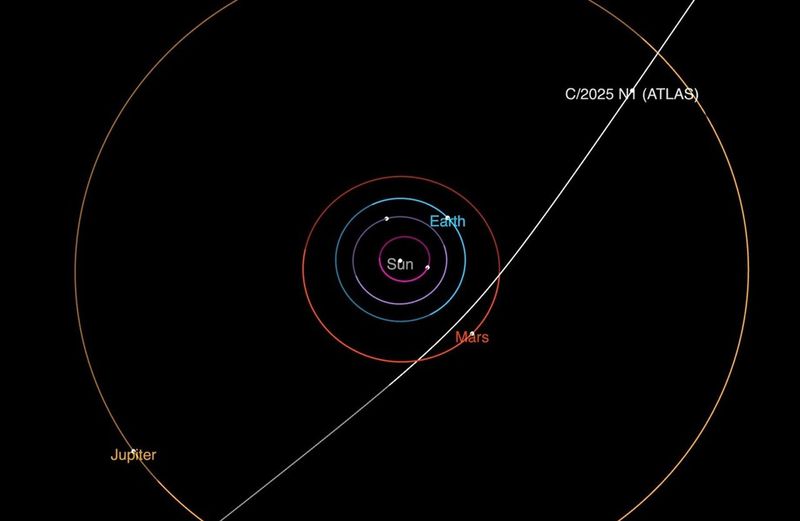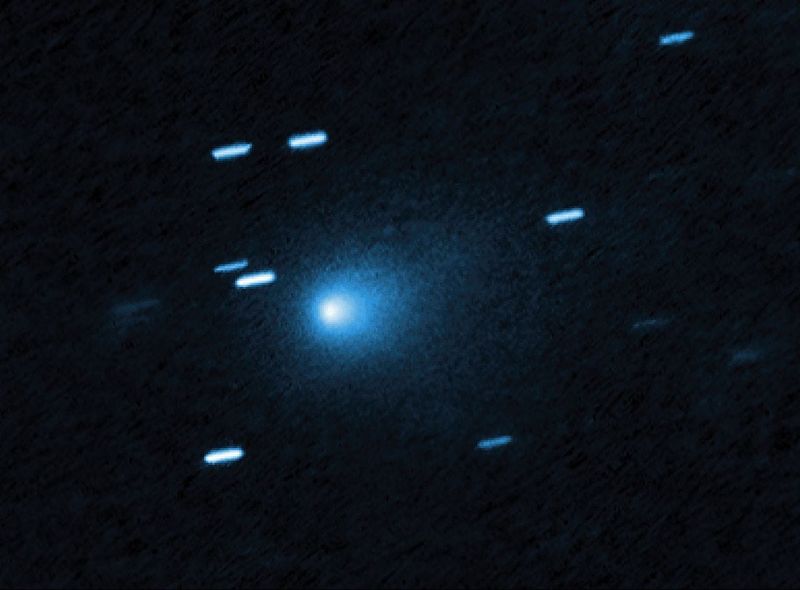

NASA's Hubble Space Telescope has gotten an up-close look at a headline-grabbing object known as 3I/ATLAS that has recently wandered into Earth's cosmic neighborhood from far away.
The image, which NASA bills as "the sharpest-ever picture" of an object most astronomers agree is almost definitely a comet, depicts the interstellar visitor that originated from outside our solar system from elsewhere in the Milky Way.
3I/ATLAS first made news in early July when scientists confirmed it as the third-ever observed interstellar interloper in our solar system. The space object further attracted the public's fascination again later in the month when a controversial astrophysicist from Harvard University began claiming it could be an alien spaceship.
What we definitely know about 3I/ATLAS is that it has been drifting through interstellar space for billions of years, gaining speed from the gravitational slingshot effect of passing countless stars and nebulas.
Fortunately, Hubble is just the first in NASA's fleet of telescopes slated to observe the likely comet as scientists look to learn more about the object's size of physical properties.
What is 3I/ATLAS?
A likely comet known as 3I/ATLAS made news in July when it was confirmed to have originated outside Earth's solar system, which makes it just one of three known interstellar objects ever discovered in our cosmic neighborhood.
What's more, the object, which scientists estimate to be more than 12 miles wide, is whizzing at 130,000 miles per hour relative to the sun on a trajectory that on Oct. 30 will bring it within about 130 million miles of Earth, according to NASA.
A telescope in Chile – part of the NASA-funded Asteroid Terrestrial-impact Last Alert System, or ATLAS – was the first to spot what initially looked like an unknown asteroid on a path approaching Earth’s orbit.
The observation was reported to the Minor Planet Center, the official authority for observing and reporting new asteroids, comets and other small bodies in the solar system. The object, eventually confirmed to almost certainly be a comet and named 3I/ATLAS, was later confirmed to have interstellar origins after follow-up observations.
NASA's Hubble Space Telescope gets a look at likely comet
Hubble’s observations of 3I/ATLAS have allowed astronomers to more accurately estimate the size of the comet’s solid, icy nucleus. Hubble captured the image of the comet on July 21, which NASA released Thursday, Aug. 7, in a blog post.
The upper limit on the diameter of the comet's nucleus is anywhere between 1,000 feet to 3.5 miles across, researchers concluded. Hubble's observations may have helped pinpoint the comet's size, but scientists still have not determined what comprises its core.
Its precise cosmic origins also remain a mystery.
“No one knows where the comet came from," David Jewitt, an astronomer at the University of California who authored a research paper about the Hubble findings, said in a statement. "It’s like glimpsing a rifle bullet for a thousandth of a second. You can't project that back with any accuracy to figure out where it started on its path.”
Observations from other NASA missions, including the infrared James Webb Space Telescope, "will help further refine our knowledge about the comet, including its chemical makeup," NASA said.
Harvard astrophysicist Avi Loeb suggests 3I/ATLAS is alien tech
Not all researchers have been convinced that 3I/ATLAS is a comet.
Avi Loeb, an astrophysicist from Harvard University, authored a paper with two others – uploaded July 16 to the preprint server arXiv – speculating about whether the object could be "hostile" alien technology.
Loeb has long had a preoccupation with extraterrestrials – even co-founding the Galileo Project, a research program at the Harvard-Smithsonian Center for Astrophysics dedicated to the search for alien life. But while Loeb has often encouraged scientists to have an open mind about extraterrestrials, his theories and research have often rankled other astrophysicists in the field, who push back on some of his bolder claims.
For instance, when the first interstellar object ever detected in our solar system was spotted in 2017, Loeb similarly posited that it was of extraterrestrial origin – a theory later debunked.
Contributing: Mary Walrath-Holdridge, USA TODAY
Eric Lagatta is the Space Connect reporter for the USA TODAY Network. Reach him at elagatta@gannett.com
This article originally appeared on USA TODAY: NASA's Hubble Space Telescope gets look at interstellar comet 3I/ATLAS. How big is it?
Reporting by Eric Lagatta, USA TODAY / USA TODAY
USA TODAY Network via Reuters Connect

 USA TODAY National
USA TODAY National
 KRWG Public Media
KRWG Public Media America News
America News CBS News World
CBS News World New York Post
New York Post The Spokesman-Review
The Spokesman-Review KY3
KY3 NBC Bay Area Dixon News
NBC Bay Area Dixon News Raw Story
Raw Story NFL Washington Commanders
NFL Washington Commanders Just Jared
Just Jared